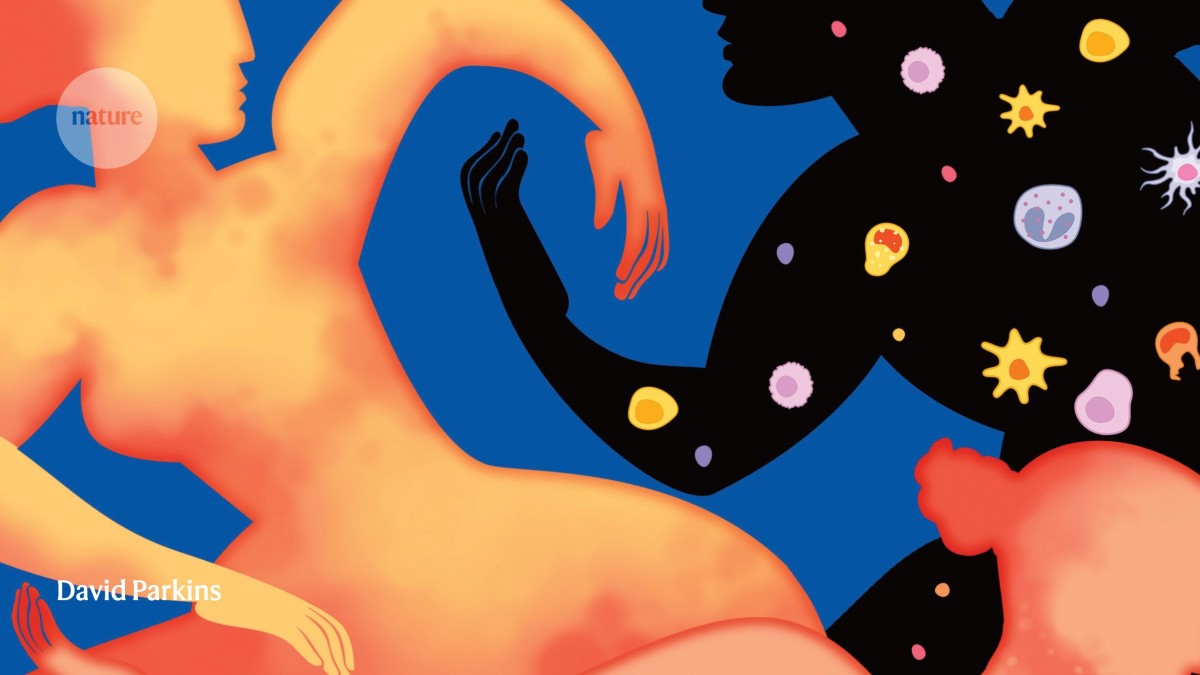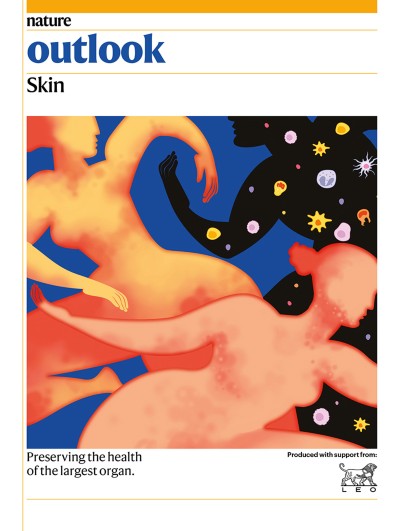You have full access to this article via your institution.
The word skin has come to stand for superficiality and lack of depth, but human skin defies such connotations. For one thing, it is enormous, accounting for roughly 15% of a person’s body weight. Skin is also remarkable for its diverse roles: protection against pathogens, temperature regulation and, of course, sensation.
Nature Outlook: Skin
Like any part of the body, skin is fallible to disease. But scientists are making great strides in protecting and improving the organ’s health. Gene therapies, for example, are yielding remarkable results in correcting a rare disorder that results in fragile ‘butterfly skin’, enabling children with the skin condition to live active lives. People with psoriasis, who have long been faced with the need to take antibody medications their whole lives, could soon find longer-lasting relief in more-durable treatments. And acne that has beset generations of adolescents might yet be controlled by vaccines. Meanwhile, advances in artificial skin are making it possible to restore a near-natural appearance to wounded or badly burnt tissue.
Skin interacts with other parts of the body in complex and sometimes mystifying ways. People affected by atopic dermatitis, for example, are at greater risk of a range of mental-health disorders. There is also growing evidence that a common treatment for eczema — topical corticosteroid cream — can lead to agnonizing withdrawal symptoms in some people when they try to stop using it.
Dermatological researchers are exploring many other skin phenomena as well, including the biology of itching and how the skin defends itself against unfamiliar pathogens. Scientists are even developing artificial skin that could endow a humanoid robot with human expressions, including one that might pass for a smile. Clinical practice is also a target for progress — one dermatologist, for example, is calling for an urgent re-examination of how race and skin colour are considered when diagnosing and treating skin disease.
We are pleased to acknowledge the financial support of LEO Pharma in producing this Outlook. As always, Nature retains sole responsibility for all editorial content.



